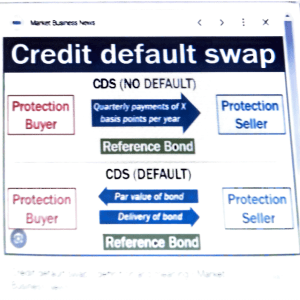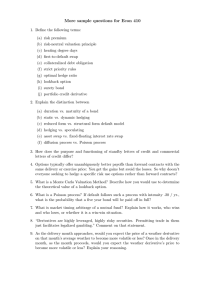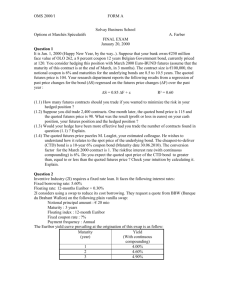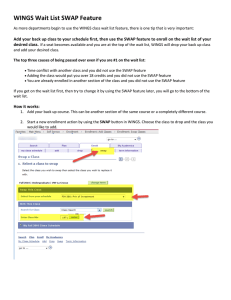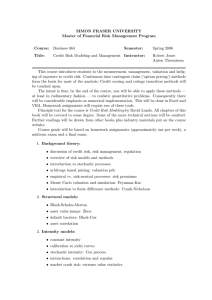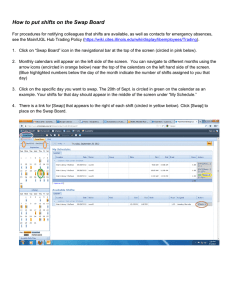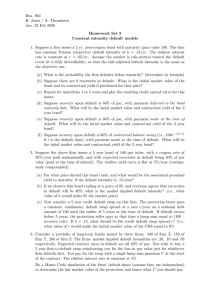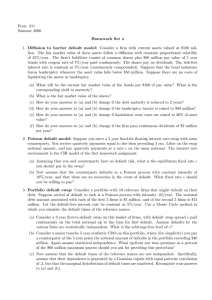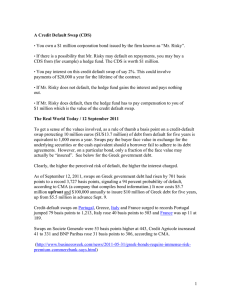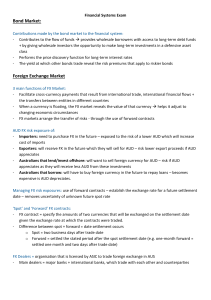SAMPLE QUESTIONS Economics 482 (a) American put option
advertisement
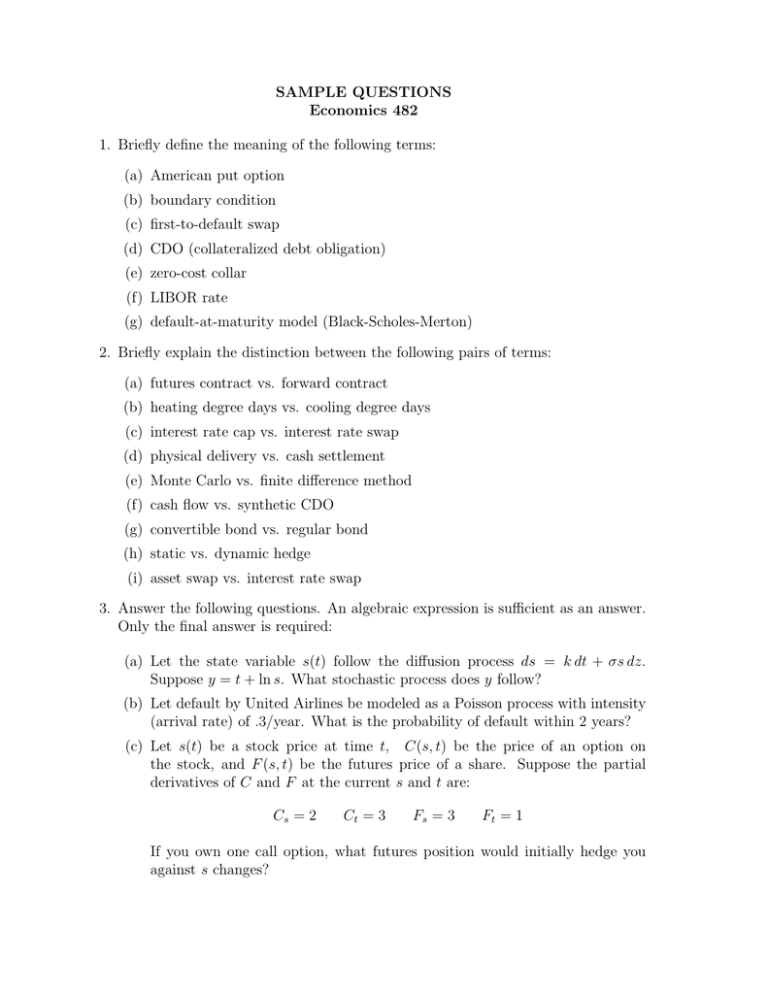
SAMPLE QUESTIONS Economics 482 1. Briefly define the meaning of the following terms: (a) American put option (b) boundary condition (c) first-to-default swap (d) CDO (collateralized debt obligation) (e) zero-cost collar (f) LIBOR rate (g) default-at-maturity model (Black-Scholes-Merton) 2. Briefly explain the distinction between the following pairs of terms: (a) futures contract vs. forward contract (b) heating degree days vs. cooling degree days (c) interest rate cap vs. interest rate swap (d) physical delivery vs. cash settlement (e) Monte Carlo vs. finite difference method (f) cash flow vs. synthetic CDO (g) convertible bond vs. regular bond (h) static vs. dynamic hedge (i) asset swap vs. interest rate swap 3. Answer the following questions. An algebraic expression is sufficient as an answer. Only the final answer is required: (a) Let the state variable s(t) follow the diffusion process ds = k dt + σs dz. Suppose y = t + ln s. What stochastic process does y follow? (b) Let default by United Airlines be modeled as a Poisson process with intensity (arrival rate) of .3/year. What is the probability of default within 2 years? (c) Let s(t) be a stock price at time t, C(s, t) be the price of an option on the stock, and F (s, t) be the futures price of a share. Suppose the partial derivatives of C and F at the current s and t are: Cs = 2 Ct = 3 Fs = 3 Ft = 1 If you own one call option, what futures position would initially hedge you against s changes? 4. Answer in a few paragraphs the following questions: (a) Describe the process of asset securitization. What are its objectives and social benefits? (b) How would you combine a floating rate bank loan or bond with an interest rate swap to get the economic equivalent of a fixed rate bond? Illustrate with a concrete example (i.e., pick a hypothetical swap rate and show what fixed rate results). How would you further combine it with a credit default swap to get the equivalent of a default-free fixed rate bond? (c) Suppose you own a tree. The tree grows. Its volume at age t is 1 − e−t cubic metres. It can be cut and sold for lumber at any time up to age 50 years (after which pine beetles render it worthless). The spot price p(t) of wood ($ per cubic metre) evolves randomly according to the (risk-neutral) process dp = k(p̄ − p) dt + σp dz Let V (p, t) denote the market value of your tree at age t with lumber prices then at p. Outline a computer program to determine V (p, t) and conditions under which the tree is optimally cut down.
